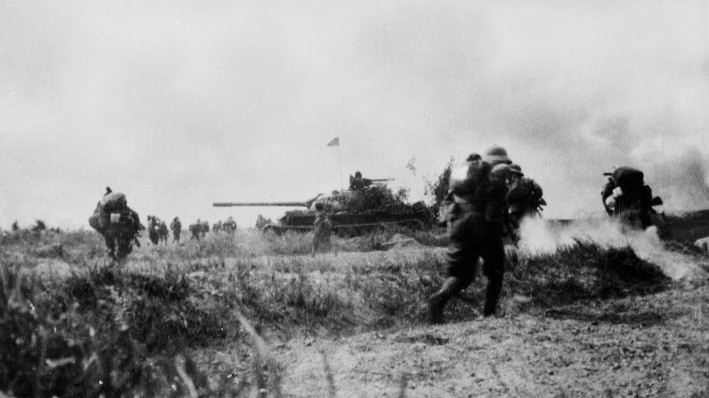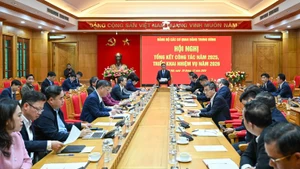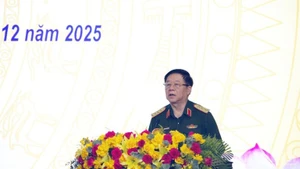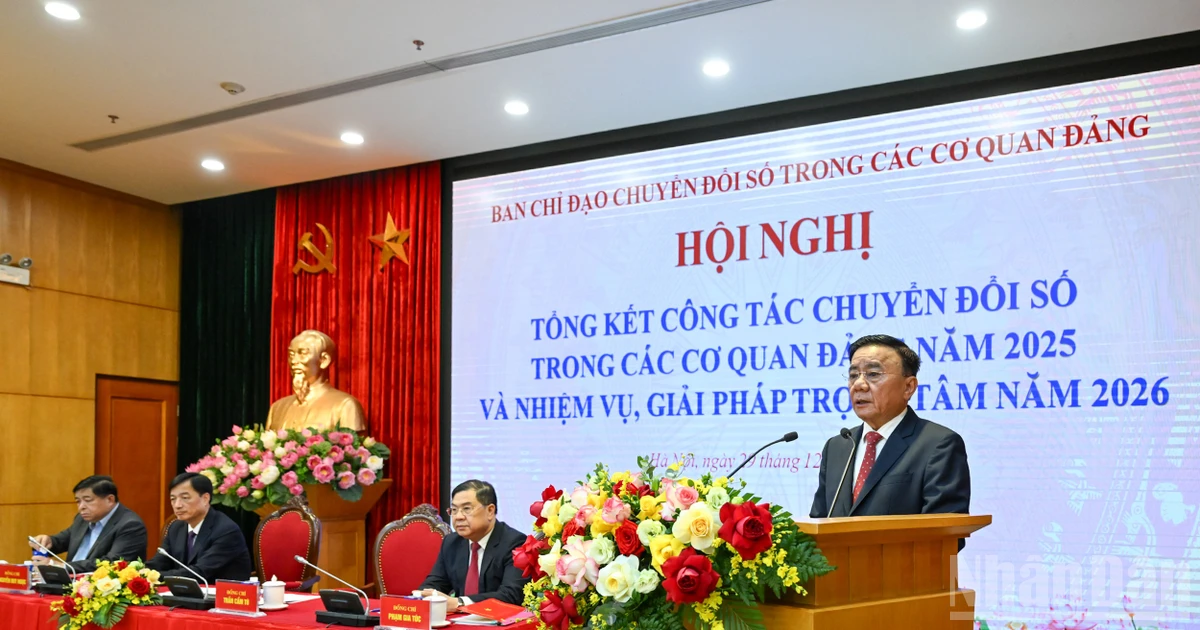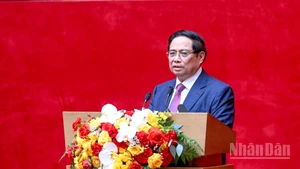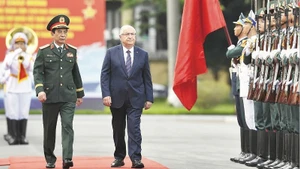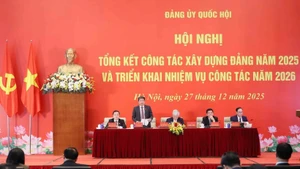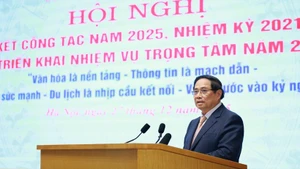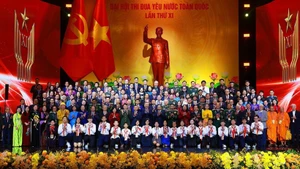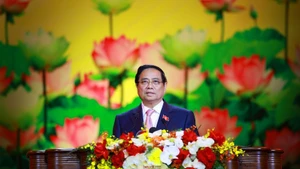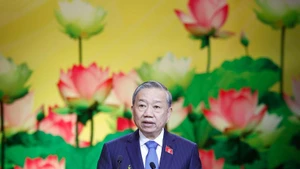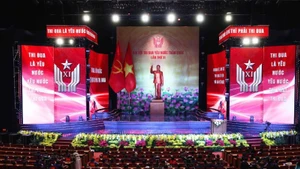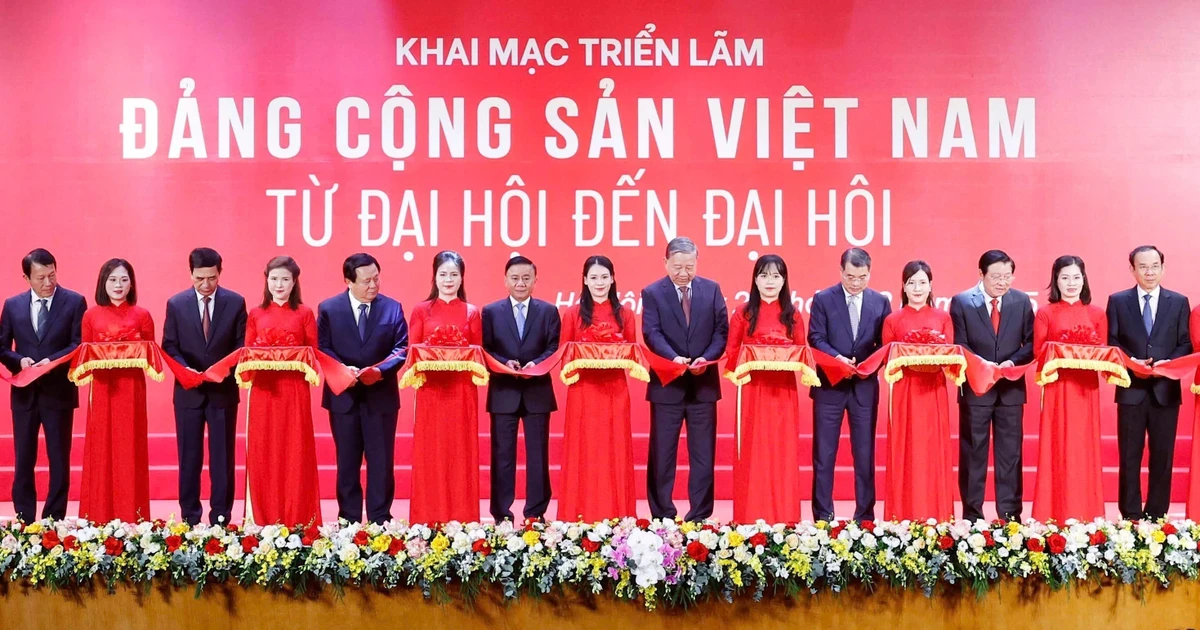Regarding the eastern direction of the Ho Chi Minh Campaign, for two consecutive days, April 27 and 28, 1975, Division 304 repelled many enemy counterattacks and launched several assaults on the Armoured School and the Nuoc Trong base, but could not decisively capture them.
By 10:00 AM on April 27, 1975, Division 325 captured Thai Lac, Phuoc Thieng, and Phu Loi, encircling Long Tan. In Long Thanh area, Regiment 101 attacked the district capital.
The enemy reinforced their forces and called in air and artillery support for Marine Brigade 468, along with security and local militia, to defend Long Thanh District. Vietnamese soldiers hunted down enemy troops while repelling enemy aircraft.
At 4:30 PM, Division 325 fully controlled the Long Thanh area, breaking a crucial link in the enemy's southeastern Saigon defensive line. On the night of April 27, 1975, the division attacked Nhon Trach but was unable to decisively capture the base to deploy artillery as planned.
Regarding direction of Division 3, Military Region 5, on the morning of April 27, 1975, Vietnamese tanks led Battalion 7 of Regiment 141 to attack and destroy enemy resistance pockets inside Ba Ria Town, successively capturing the logistics area, security zone, police station, and the headquarters of the security regiment. Battalion 4 took control of Binh Gia and Ngai Giao, advanced to Binh Ba, and then captured Nui Dat.
In the districts of Xuyen Moc, Long Le, and Long Dien, local armed forces simultaneously attacked, creating an inside-outside pincer that forced the enemy to flee. Battalion 5 attacked the enemy artillery positions at Da Hill, while Battalion 8 besieged the Van Kiep training centre.
By noon, Regiment 141 had crushed enemy resistance and completely liberated Ba Ria Town. Division 3 then advanced toward Vung Tau, but the enemy destroyed the Co May Bridge and organised a blockade, preventing further progress. The division shifted the main direction to Regiment 12 and reinforced it with Regiment 2 to continue attacking the enemy. Local units coordinated with the main force to attack the enemy in Long Dien and Dat Do.
By 5:00 PM on April 27, 1975, Vietnamese forces fully controlled the area from Long Hai to Ba Ria.
Regarding the southeastern direction, at 4:07 AM on April 27, 1975, Infantry Division 341, reinforced with a tank battalion, a mixed anti-aircraft battalion, and regimental/divisional-level tactical firepower, launched an assault on the Trang Bom stronghold — a crucial link in the enemy’s forward defensive line. Fierce battles lasted for hours between our tanks/armoured vehicles and those of the enemy.
By 10:00 AM on April 27, 1975, Division 341 had crushed the enemy’s defensive area and seized control of Trang Bom District, which had been held by Infantry Division 18 and Armoured Regiment 5 of the Republic of Vietnam.
Division 6, reinforced by Regiment 209 of Division 7, a tank battalion, and two anti-aircraft battalions, advanced south of Highway 1, destroying enemy defences at Ong Hoang Slope and routing Armoured Regiment 5 at Yen The intersection, advancing toward Ho Nai and Bien Hoa. The enemy regrouped at Long Lac-Ho Nai, but the division had not yet broken through.
On the night of April 27 to early April 28, 1975, Special Forces Regiment 113 split into three groups to infiltrate and capture Ghenh Bridge, Hoa An Bridge, and the Hoc Ba Thuc armoured base. Ghenh Bridge was especially important, so the enemy concentrated their forces for fierce counterattacks. The battles by Regiment 113 to hold Ghenh Bridge were extremely intense over April 28 and 29, 1975.
Regarding the northern direction, at 4:30 PM, Division 312 of Army Corps 1 attacked Binh Co and Binh My strongpoints. At 4:45 PM, Vietnamese artillery heavily shelled the Binh Co-Binh My base. Supported by artillery, the Phu Loi 2 Battalion quickly penetrated the enemy base. Company 9 of Battalion 3 attacked directly. The enemy resisted fiercely.
By 6:00 PM on April 27, 1975, Vietnamese soldiers had destroyed and routed all enemy troops, fully controlling both bases, opening Route 16 for the division to deploy north of Ut Tho Bridge (on Route 15), setting up an encirclement as planned.
From April 25 to April 27, 1975, Battalion 5 of Regiment 27, Division 320B, maneuverered deep toward Lai Thieu.
Regarding the northwestern direction of Army Corps 3, at noon on April 27, 1975, Saigon-Gia Dinh special forces, including female commando Nguyen Thi Trung Kien (real name Cao Thi Nhip), arrived at Division 10’s command, ready to guide the army into the city. The army and people of Cu Chi enthusiastically helped the troops build positions and dig trenches for artillery. Local women actively helped camouflage positions and supply food.
On the night of April 27, 1975, Division 316 deployed all forces around enemy positions, forming a siege and preparing to destroy Division 25 of the Republic of Vietnam along the route from Tra Vo to Trang Bang. Regiment 148 was ordered to continue attacking Bau Nau and Tra Vo. Regiment 174 attacked Trung Hung and Phuoc My. 1 Regiment 49 attacked Trang Bang Town.
Regarding the western and southwestern directions, at 3:00 AM on April 27, 1975, Division 5 attacked and cut Highway 4 from Ben Luc to Tan An; Division 8 cut Highway 4 from Trung Luong-Tan Hiep-Long Dinh. Special Forces Battalion 263, Engineering Battalion 341 of Military Region 8, and local troops cut the Cai Lay-An Huu section, setting up obstacles to prevent enemy vehicles from the Mekong Delta from reinforcing Saigon, drawing and blocking Divisions 22, 7, and 9 of the Republic of Vietnam in this direction, facilitating advances on other fronts.
On the morning of April 27, 1975, Division 3 attacked and seized the An Ninh-Loc Giang bridgehead, then crossed the Vam Co Dong River to approach the enemy and ensure the main assault force (Division 9 and technical units) could cross the river to their assembly positions. Regiments 24 and 88 approached the southern outskirts of Saigon.
On the night of April 27, 1975, Regiment 1 of Division 9 reached Xang Canal; Regiment 2 and Division Command reached An Ninh, Tra Cao; Regiment 3 reached Dinh Thanh; Artillery Regiment 42 and tanks, anti-aircraft guns assembled at Soc Noc. On the march, units destroyed and forced the withdrawal of many enemy outposts, supporting the people and local armed forces in rising up to overthrow the puppet regime and liberate villages and communes.
Coordinating with the main force, for several nights, people in the districts of Cai Be and Cai Lay poured onto Highway 4, setting up obstacles to block enemy vehicles from the Mekong Delta heading to Saigon. Highway 4 was cut, and the army and people of the Mekong Delta excellently executed the task of dividing and containing the enemy in the southern area of the campaign, while also sending forces to coordinate with the main army corps attacking Saigon via Highway 4.
On enemy side, at 10:30 PM on April 27, 1975, Duong Van Minh — who was considered capable of negotiating with the Provisional Revolutionary Government of the Republic of South Vietnam — was appointed president. On April 27, 1975, the enemy used 114 aircraft sorties to fiercely attack Army Corps 2’s advancing formations. The corps' air defence forces fought back fiercely, shooting down seven aircraft.
Receiving urgent orders from the Forward Naval Command to liberate the islands of Nam Yet, Sinh Ton, and Truong Sa, comrade Mai Nang — Commander of Group C75, aboard ship 673 at Song Tu Tay — immediately deployed forces for the mission. At 1:30 AM on April 27, 1975, ship 673 left Song Tu Tay Island for Nam Yet Island. At 10:30 a.m. that day, ship 673 approached the island. Vietnamese forces quickly landed and completely liberated the island.
